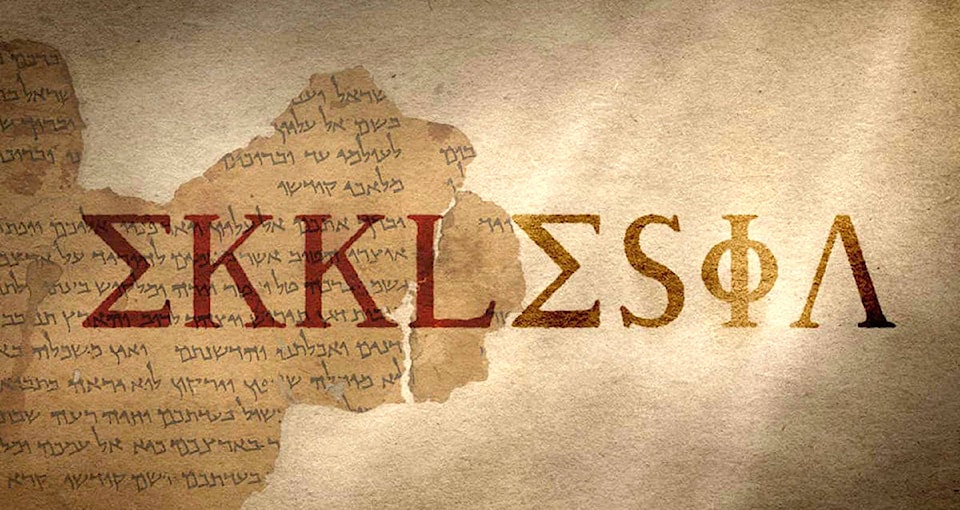By Yme Woensdregt
In my last few columns, I’ve been trying to articulate a way of thinking about the pandemic we’ve been living through over the last 16 months, using the helpful language of disorientation (Brueggemann) and dislocation (Butler Bass). Then last week, I suggested that there is an opportunity before us to dream a new vision of what life might be, using the image of religion as religare—binding or reconnecting. This is the true purpose of religion: to mend; to recover; to reconnect; to heal.
So, let’s try a thought experiment. Let’s dream boldly. Let’s try to imagine the kind of church which might serve that kind of vision for us all.
I’m uneasy about that word “church”. I certainly don’t mean a building or a temple or a cathedral. In fact, I’m beginning to think we can no longer afford to keep our buildings (and this will get me in trouble with some since we are so attached to our buildings). Further, I think the word “church” has so much baggage it’s no longer useful. The word seems tattered and torn after 2000 years of use.
So let me talk about a “faith community”, a community of people. The New Testament uses the word ekklesia, which means a people who have been “called out”: called to assemble so we might encourage one another in faithfulness, and then called back out into the world to live as the loving heart of God.
Let’s imagine what such a faith community would actually be and do. Let’s dream boldly of something that lives, breathes, serves, and makes a difference.
This faith community would incarnate God’s presence in life. Like Jesus, whom we call God incarnate, the faith community would embody God’s love. It would embrace all of life with the expansive love of God which includes all.
This faith community would not be an institution with structures, rules, layers, and hierarchies. Rather it would be a living, dynamic, ever–shifting community that gathers in different kinds of ways, ranging from small circles of friends to mass assemblies for special purposes.
This faith community would not be the only way in which God is present in the world. After all, God can be incarnate however God chooses to live with us. But many people could enter this community because it entices people with the beauty of its vision of holiness and grace, and the way it lives that vision out in mission.
A key element of this faith community is that it would look outward, unlike other human institutions that look inward. Such a community would see deeply into life. It would see people wanting to draw closer to God. It would see human need—grief and tragedy, hunger, and hopelessness. It would see key moments in people’s lives, such as partnering and parenting and passing. It would see the ways people hurt each other and all the ways in which injustice becomes systemic.
Because it sees, this faith community would have a bias toward action. It would seek to meet the needs of humanity and nature. It would welcome the stranger. It would be deeply inclusive of all God’s precious people. It would provide care and comfort, supporting people in transition and working for justice. It would feed those who are hungry, clothe those who are dressed in rags, and advocate on behalf of all the needy. It would have as much organization as it needs for action, and it would resist making any structures absolute so as to hold on to power.
Such a faith community would teach about God not by formulating doctrines, but by telling stories about how others live with God as a daily reality in their lives. It would value narrative over law and belonging over believing. The Scriptures would be a source of the early stories of God’s people. There are more recent stories which are equally valuable, and stories yet to be told. It would encourage exploration and mutual respect rather than obedience to a set of theological rules and doctrines. It would recognize that people come in a wide and blessed variety, and that not everyone has the same experience of God’s love in their life.
Such a community would travel light. It would resist the natural temptation to build facilities and would discover “sacred space” not in a specific building but in the very heart of the community itself. It would be organized around mission and need, seeking to be a presence of hope and healing in the wider community.
Leadership in such a community would be shared among many. Credentials would matter far less than mutually recognized gifts of the Spirit. It would value the contributions of all: leaders would facilitate the gifts of teaching, offering hospitality, prayer, discernment, advocacy, and many other gifts. All would contribute.
Can you imagine such a community? It’s hard. We are used to “churches” which function more like institutions. But this model is ever–shifting, ever–changing, focussed on need and ministry and mission rather than on the survival of the institution.
One of the keys to making something like this work, I think, is not to find a perfect, once–for–all way of being, but to trust the Spirit to show the way, and for us to be open and flexible to new ways. It would be a sign of life as we imagine a new way of being in a world which has been forever changed.
This truly is a new orientation. We may have to start from scratch, which is no easy thing. But this pandemic has shown that we can no longer maintain what was. It’s time to seek what could be.
It will be stressful. But it would also be reinvigorating. The life of a community like this would be found as it walks in faith, lives in hope, and grows in love.
Yme Woensdregt is a retired Anglican priest living in Cranbrook
